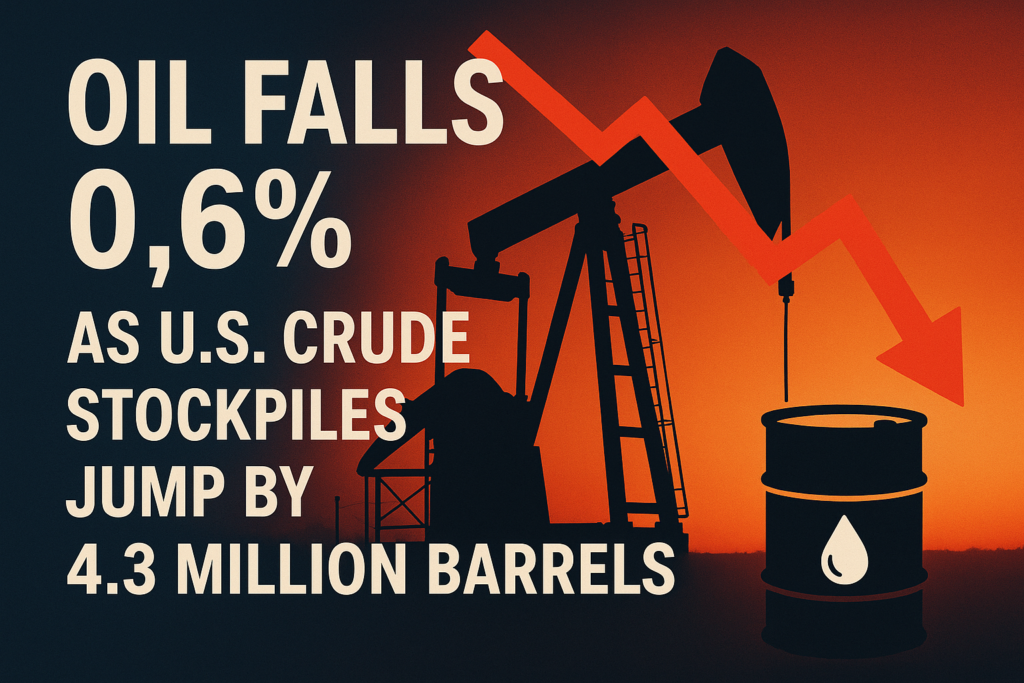Oil prices retreated slightly on Wednesday, snapping a short rally as investors digested a surprise increase in U.S. crude inventories. According to figures released by the American Petroleum Institute (API), stockpiles surged by 4.3 million barrels for the week ending May 9, defying expectations for another drawdown. This shift in supply dynamics has raised fresh concerns about softening demand in the world’s largest oil consumer.
As of 0400 GMT, Brent crude futures were down $0.39 (0.6%) at $66.24 per barrel, while West Texas Intermediate (WTI) fell $0.36 (0.6%) to $63.31. This comes after both benchmarks surged over 2.5% in the previous session.
Market attention now turns to the official inventory report from the U.S. Energy Information Administration (EIA), due at 10:30 a.m. EDT (1430 GMT). A confirmed inventory spike may deepen pressure on prices despite broader macroeconomic optimism.
U.S.-China Truce Offers Temporary Relief
Earlier this week, markets cheered news of a temporary trade truce between the United States and China. The countries agreed to pause tariffs for 90 days, with the U.S. cutting levies from 145% to 30%, and China reducing them from 125% to 10%.
This development spurred hopes for a rebound in global demand. Analysts at Rystad Energy suggested the ceasefire “eroded some demand-side pessimism” that had been weighing on energy markets for weeks.
Key Impacts from the Truce:
- Boost to cross-border trade volumes
- Stabilization in manufacturing and logistics
- Renewed appetite for commodity imports
However, analysts continue to warn that the underlying risks remain unresolved, and demand recovery could be fragile without concrete progress.
Geopolitical Tensions Cloud Outlook
Adding to the market’s uncertainty is a fresh wave of geopolitical developments. U.S. President Donald Trump began a high-profile trip to the Gulf region, securing a $600 billion Saudi investment pledge and signaling the potential easing of Syria sanctions.
Meanwhile, Washington slapped new sanctions on 20 firms tied to Iran’s military oil exports to China, escalating tensions amid ongoing nuclear negotiations in Oman.
According to Mukesh Sahdev of Rystad Energy, “The biggest variable remains how U.S. actions against Iran, Venezuela, and Russia will play out in terms of global supply.”
With summer travel season approaching, preventing a sharp spike in oil prices may be a strategic goal behind U.S. diplomatic efforts in the region.


